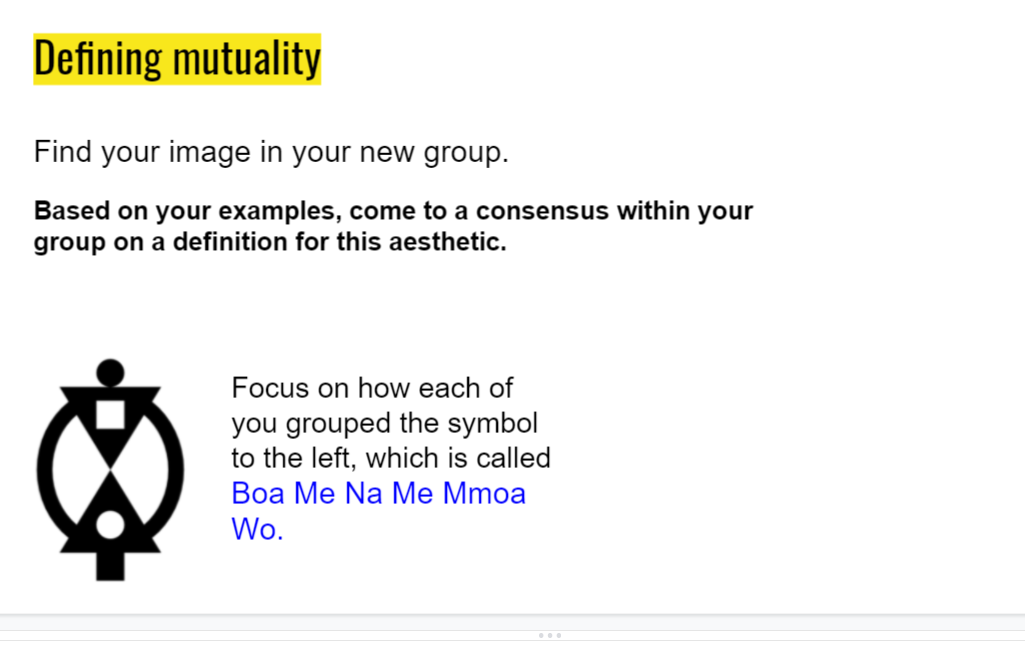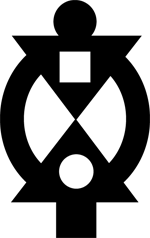Mutuality


Definitions of Mutuality
Please read the description below, copied from https://csdt.org/culture/adinkra/geometry.html
Is There an African Geometry That Is Not Part of Europe’s?
One of the fascinating questions we can ask in ethnomathematics: are there some math ideas outside of those created in Europe? Consider the adinkra symbol Boa Me Na Me Mmoa Wo, which translates to "Help me and let me help you". The upper triangle is missing a square, but has an extra circle. The lower triangle is missing a circle, but has an extra square. Each has what the other needs to complete themselves. As a social symbol, the meaning is clear: mutual aid. But how do we express that relation in math? At first the word “symmetry” comes to mind, but reflection symmetry would require that each side is a mirror image; exactly the same. Here they are complements of each other, not reflections.
 Let's call this new math property “mutuality”. Perhaps if colonialism never happened, Africans would have created a collection of proofs and theorems based on mutuality, just as Europe did for symmetry. We could start with a definition: two figures are said to be “mutuals” if their parts can be exchanged to create two completed wholes. There are still some details to work out (how do we define “parts”? or “completed”?). But assuming those challenges can be solved, it might open up new ways of thinking.
Let's call this new math property “mutuality”. Perhaps if colonialism never happened, Africans would have created a collection of proofs and theorems based on mutuality, just as Europe did for symmetry. We could start with a definition: two figures are said to be “mutuals” if their parts can be exchanged to create two completed wholes. There are still some details to work out (how do we define “parts”? or “completed”?). But assuming those challenges can be solved, it might open up new ways of thinking.
Write your own definition for "mutuality" and post on this jamboard.
Is your definition precise?
Does your definition communicate what is necessary?
Are there other terms that need to be defined to understand the definition?
What makes a definition mathematical?